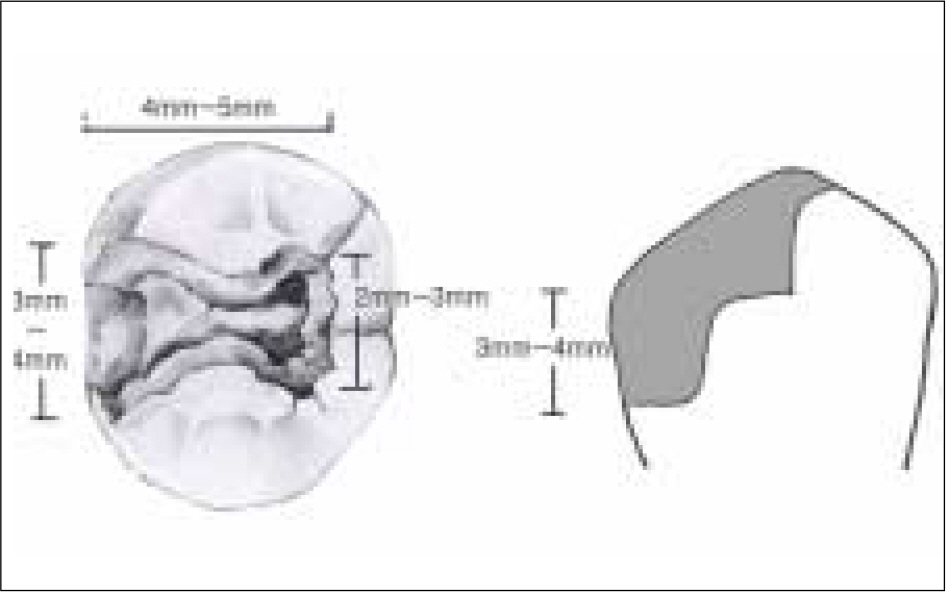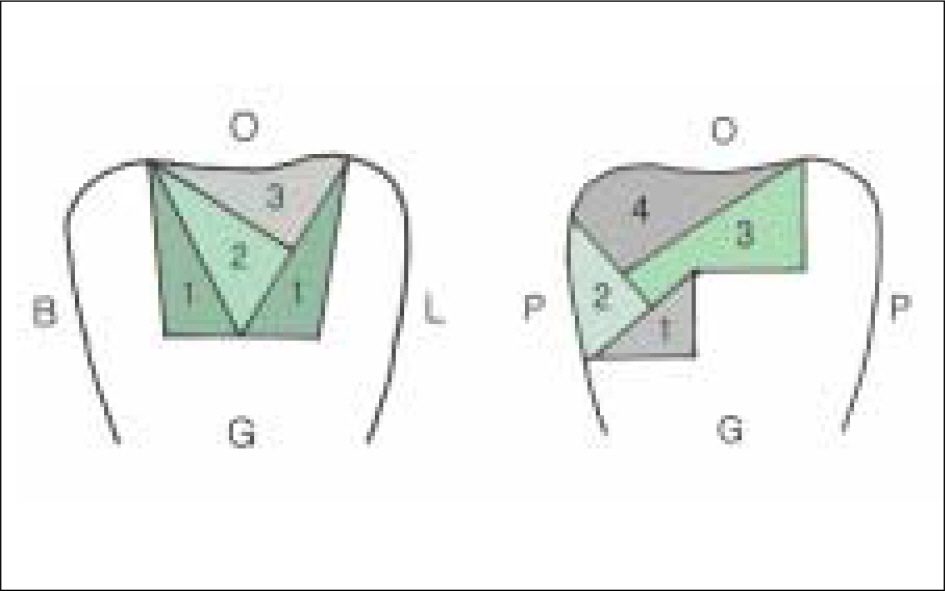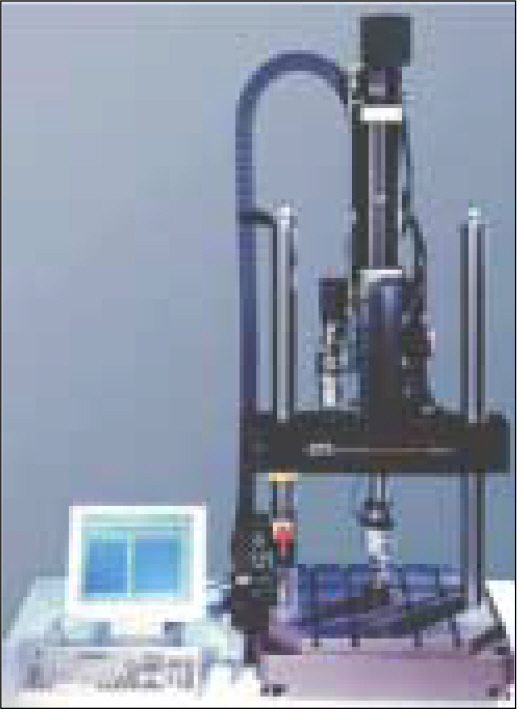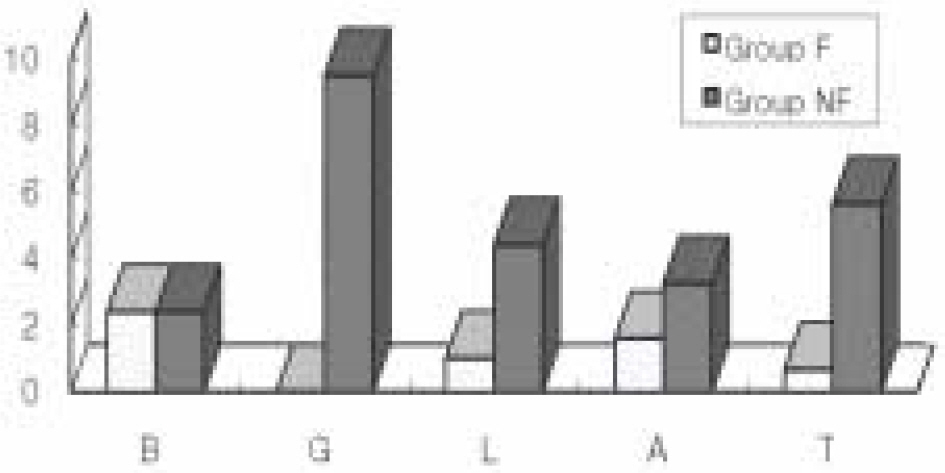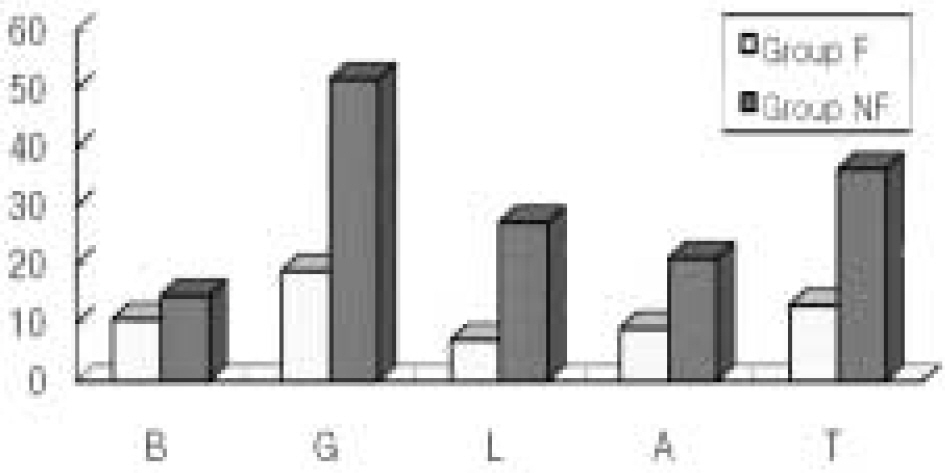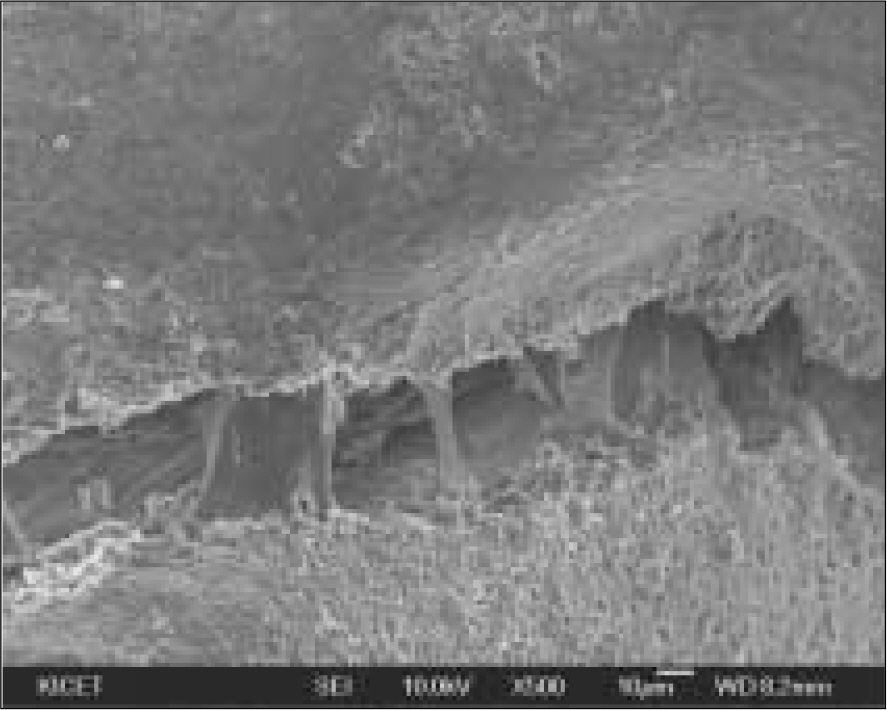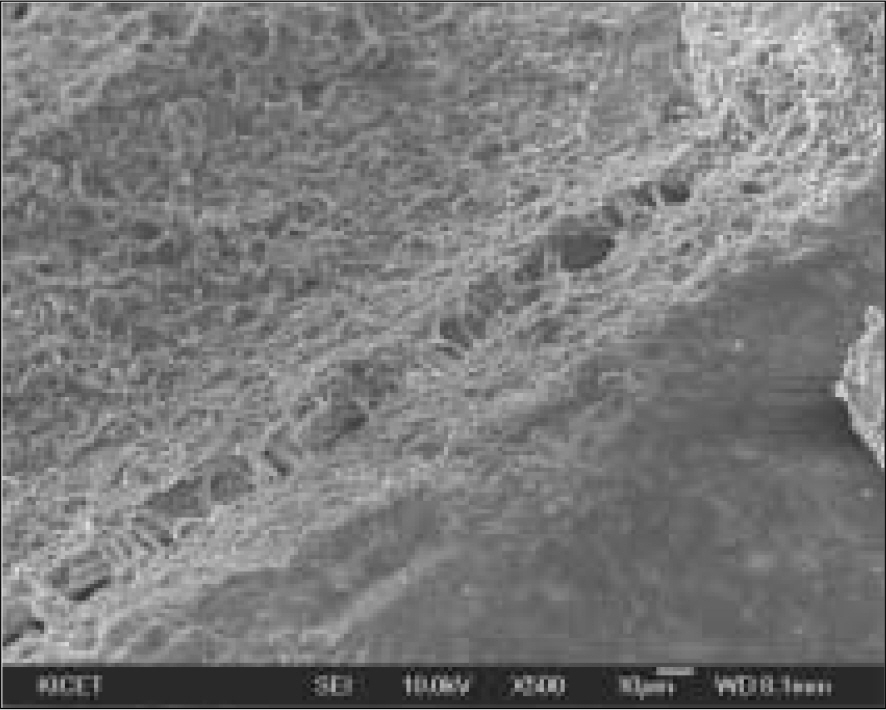J Korean Acad Prosthodont.
2009 Jul;47(3):342-347.
Comparison of microleakage after load cycling for nanofilled composite resin fillings with or without flowable resin lining
- Affiliations
-
- 1Department of Prosthodontics, Inha University, Korea. onsdo@inha.ac.kr
- 2Institute of ceramic engineering and technology, Korea.
Abstract
- STATEMENT OF PROBLEM: when using resin for class II restoration, micoleakage by instrumentation can be regarded as the primary negative characteristic. A review of the available literature suggests that using flowable resin as liner to decreased microleakage. PURPOSE: The aim of this study was to determine the influence of the nanofilled flowable resin lining on marginal microleakage after load cycling in class II composite restoration fillings using nanofiller resin. MATERIAL AND METHODS: 24 extracted premolars were prepared with class II cavity. F group was restored the nanofilled resin with the nanofilled flowable resin as liner. NF group was restored the nanofilled resin only. After restoration, an experiment was performed on 2 groups using a 300N load at 104, 105 and 106 cycles. Prior to and before each load cycling, it was gauged length on total marginal microleakage, axial marginal microleakage and buccal, gingival, lingual marginal microleakage. Data were analyzed with the Mann-Whitney test & Kruskal-Wallis test. RESULTS: There were statistically significant differences between 2 groups and between individual groups. (P < .05) The result showed less microleakage in teeth restored by the nanofilled resin, which was lined by the nanofilled flowable resin. CONCLUSION: There was significant reduction in microleakage when the nanofilled flowable resin lining was placed underneath the nanofilled resin in class II composite restoration fillings.
Figure
Reference
-
1.Browning WD., Brackett WW., Gilpatrick RO. Two-year clinical comparison of a microfilled and a hybrid resin-based composite in non-carious Class V lesions. Oper Dent. 2000. 25:46–50.2.Ward DH. Esthetic restoration of tooth structure using a nanofill composite system. Compend Contin Educ Dent. 2005. 26(252, 254):256–7.3.Yap AU., Yap SH., Teo CK., Ng JJ. Comparison of surface finish of new aesthetic restorative materials. Oper Dent. 2004. 29:100–4.4.Ritter AV. Direct resin-based composites: current recommendations for optimal clinical results. Compend Contin Educ Dent. 2005. 26:481–2. 484–90.5.Holmes JR., Bayne SC., Holland GA., Sulik WD. Considerations in measurement of marginal fit. J Prosthet Dent. 1989. 62:405–8.
Article6.Huysmans MC., van der Varst PG., Lautenschlager EP., Monaghan P. The influence of simulated clinical handling on the flexural and compressive strength of posterior composite restorative materials. Dent Mater. 1996. 12:116–20.
Article7.Lindberg A., van Dijken JW., Ho ¨rstedt P. In vivo interfacial adaptation of class II resin composite restorations with and without a flowable resin composite liner. Clin Oral Investig. 2005. 9:77–83.8.Jain P., Belcher M. Microleakage of Class II resin-based composite restorations with flowable composite in the proximal box. Am J Dent. 2000. 13:235–8.9.Wibowo G., Stockton L. Microleakage of Class II composite restorations. Am J Dent. 2001. 14:177–85.10.Belli S., Orucoglu H., Yildirim C., Eskitascioglu G. The effect of fiber placement or flowable resin lining on microleakage in Class II adhesive restorations. J Adhes Dent. 2007. 9:175–81.11.Beznos C. Microleakage at the cervical margin of composite Class II cavities with different restorative techniques. Oper Dent. 2001. 26:60–9.12.Lutz E., Krejci I., Oldenburg TR. Elimination of polymerization stresses at the margins of posterior composite resin restorations: a new restorative technique. Quintessence Int. 1986. 17:777–84.13.Frankenberger R., Roth S., Kra ¨mer N., Pelka M., Petschelt A. Effect of preparation mode on Class II resin composite repair. J Oral Rehabil. 2003. 30:559–64.
Article14.Tjan AH., Bergh BH., Lidner C. Effect of various incremental techniques on the marginal adaptation of class II composite resin restorations. J Prosthet Dent. 1992. 67:62–6.
Article15.Hasegawa T., Manabe A., Itoh K., Wakumoto S. Investigation of self-etching dentin primers. Dent Mater. 1989. 5:408–10.
Article
- Full Text Links
- Actions
-
Cited
- CITED
-
- Close
- Share
- Similar articles
-
- The effect of marginal microleakge according to thickness of flowable resin
- Influence of flowable composite lining on microleakage at the gingival dentin margin
- Microleakage of microfill and flowable composite resins in class V cavity after load cycling
- Evaluation of Shear Bond Strength and Microleakage of Self-adhesive Giomer
- Effect of thermocycling on shear bond strength and mode of failure of bonded retainer using flowable composite resin

